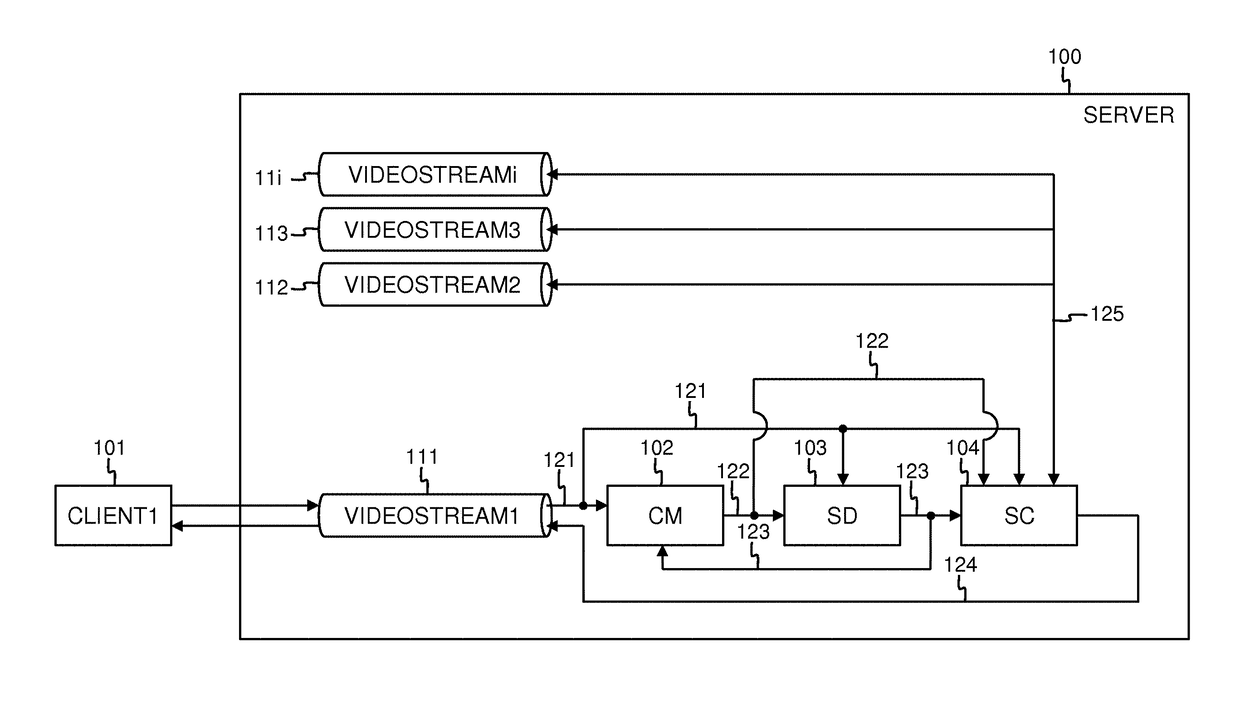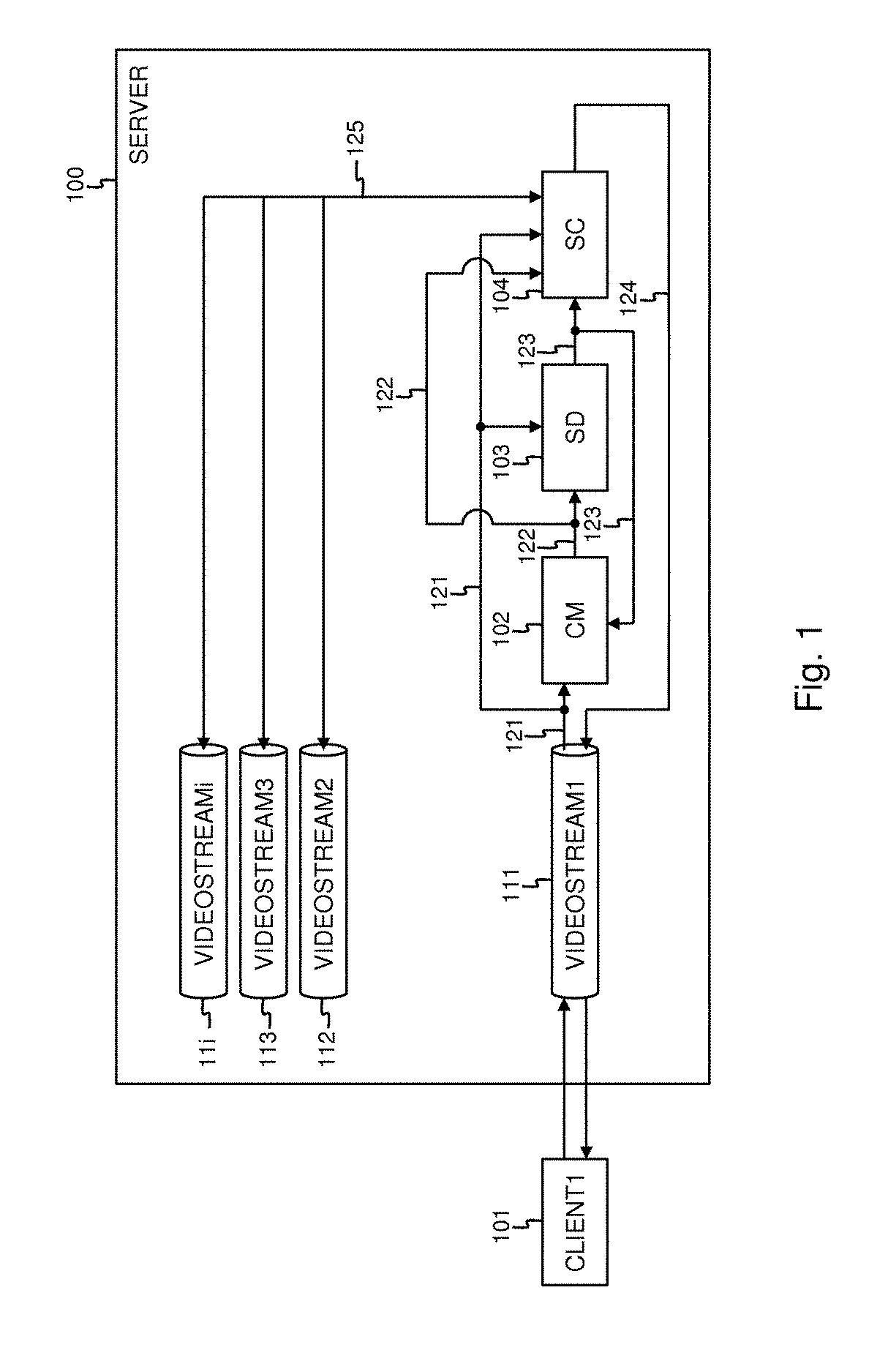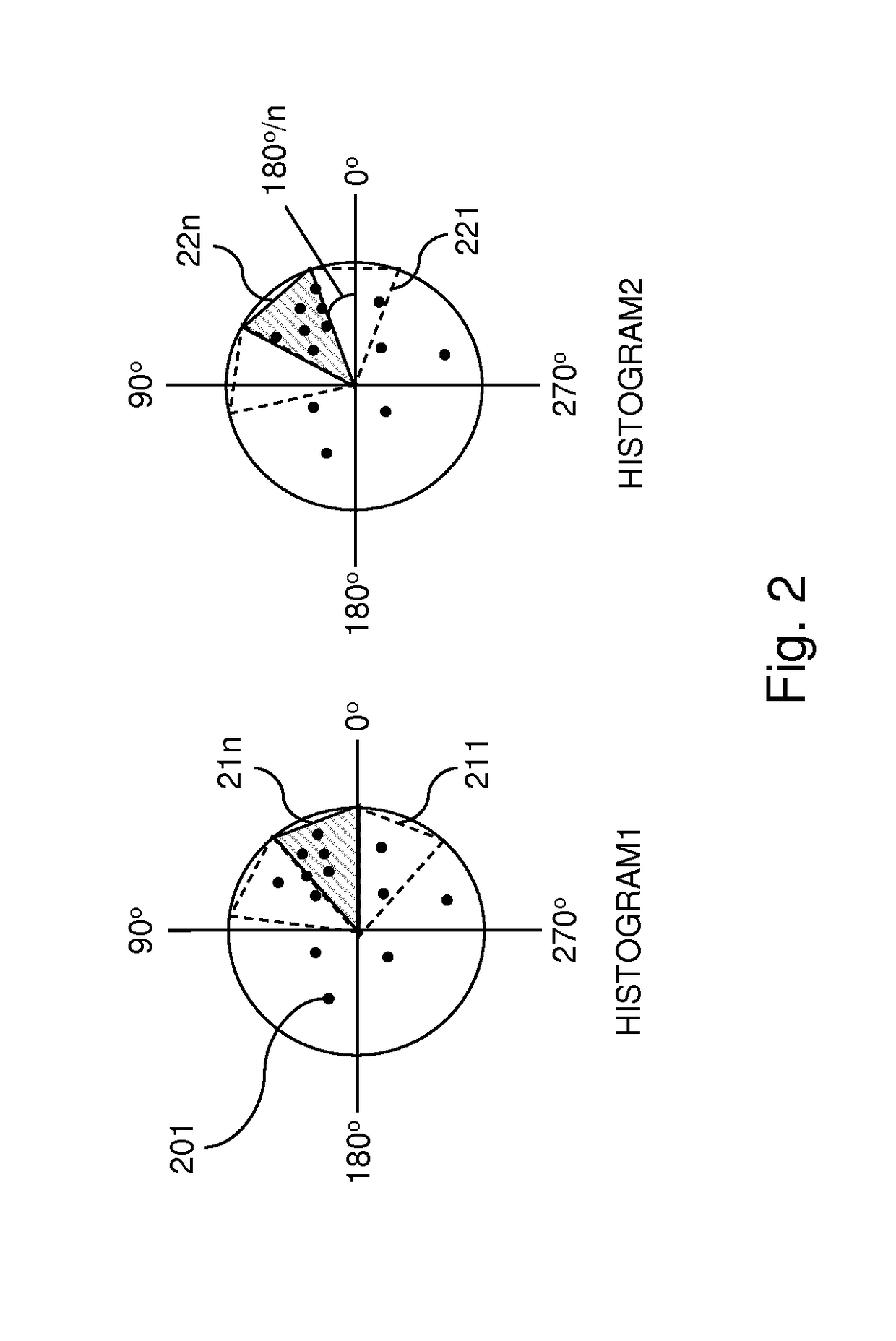Videoconferencing server with camera shake detection
a videoconferencing server and shake detection technology, applied in the field ofimmersive video conferencing, can solve the problems of reducing the output affecting the quality of the foreground extraction process, and the dedicated set-up procedure that does not enable ubiquitous access, so as to achieve the effect of increasing accuracy and reliability
- Summary
- Abstract
- Description
- Claims
- Application Information
AI Technical Summary
Benefits of technology
Problems solved by technology
Method used
Image
Examples
Embodiment Construction
)
[0039]FIG. 1 shows a video client, 101 or CLIENT1, connected to an immersive video conferencing server 100. The immersive video conferencing server 100 may for instance be a software application running in a cloud environment, i.e. using processing and memory resources that are hosted and maintained by a third party, different from the clients that use the system.
[0040]The immersive video conferencing server 100 comprises video stream transceiving channels, 111 or VIDEOSTREAM1, 112 or VIDEOSTREAM2, 113 or VIDEOSTREAM3, 11i or VIDEOSTREAMi, a cut-out module 102 or CM, a shake detector 103 or SD, and a scene composer 104 or SC. The cut-out module 102, shake detector 103 and scene composer 104 jointly form the video processing pipeline of the immersive video conference platform.
[0041]The video stream transceiving channel 111 receives a video stream captured by a camera integrated in or connected to the video conference client 101. The video stream transceiving channel 111 feeds the vi...
PUM
 Login to View More
Login to View More Abstract
Description
Claims
Application Information
 Login to View More
Login to View More - R&D
- Intellectual Property
- Life Sciences
- Materials
- Tech Scout
- Unparalleled Data Quality
- Higher Quality Content
- 60% Fewer Hallucinations
Browse by: Latest US Patents, China's latest patents, Technical Efficacy Thesaurus, Application Domain, Technology Topic, Popular Technical Reports.
© 2025 PatSnap. All rights reserved.Legal|Privacy policy|Modern Slavery Act Transparency Statement|Sitemap|About US| Contact US: help@patsnap.com



